Email communication is a reliable means of connecting with customers, clients, and colleagues. However, the effectiveness of email marketing and communication hinges on whether your emails reach their intended recipients. One common obstacle that email senders encounter is being blacklisted.
This article explores the concept of email blacklisting, its impact on email marketing, reasons for getting blacklisted, how to check if you're blacklisted, remediation steps, and prevention strategies.
1. Definition and overview
What is an email blacklist?
An email blacklist, a DNSBL (Domain Name System Blacklist) or RBL (Real-time Blackhole List), is a list of email senders or domains identified as sources of spam or other malicious activities. Various organizations maintain these lists and internet service providers (ISPs) to protect users from unsolicited and potentially harmful emails.
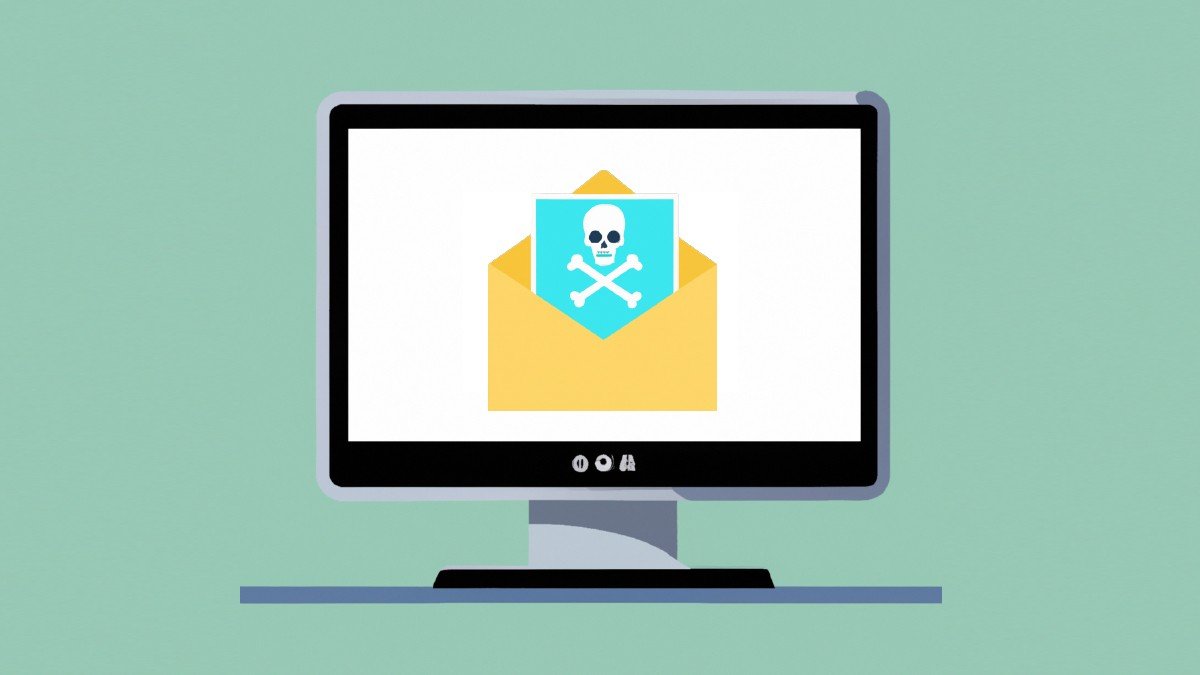
(Source: Original work created with DALL-E 2 and Photoshop)
Why do email blacklists exist?
Email blacklists exist to maintain the integrity of email communication. With almost 85% of emails sent daily considered as spam, email blacklists serve as a defense mechanism against phishing attempts and other email-related threats. By identifying and blocking email senders with suspicious or harmful behavior, blacklists help protect recipients from unwanted and potentially harmful messages.
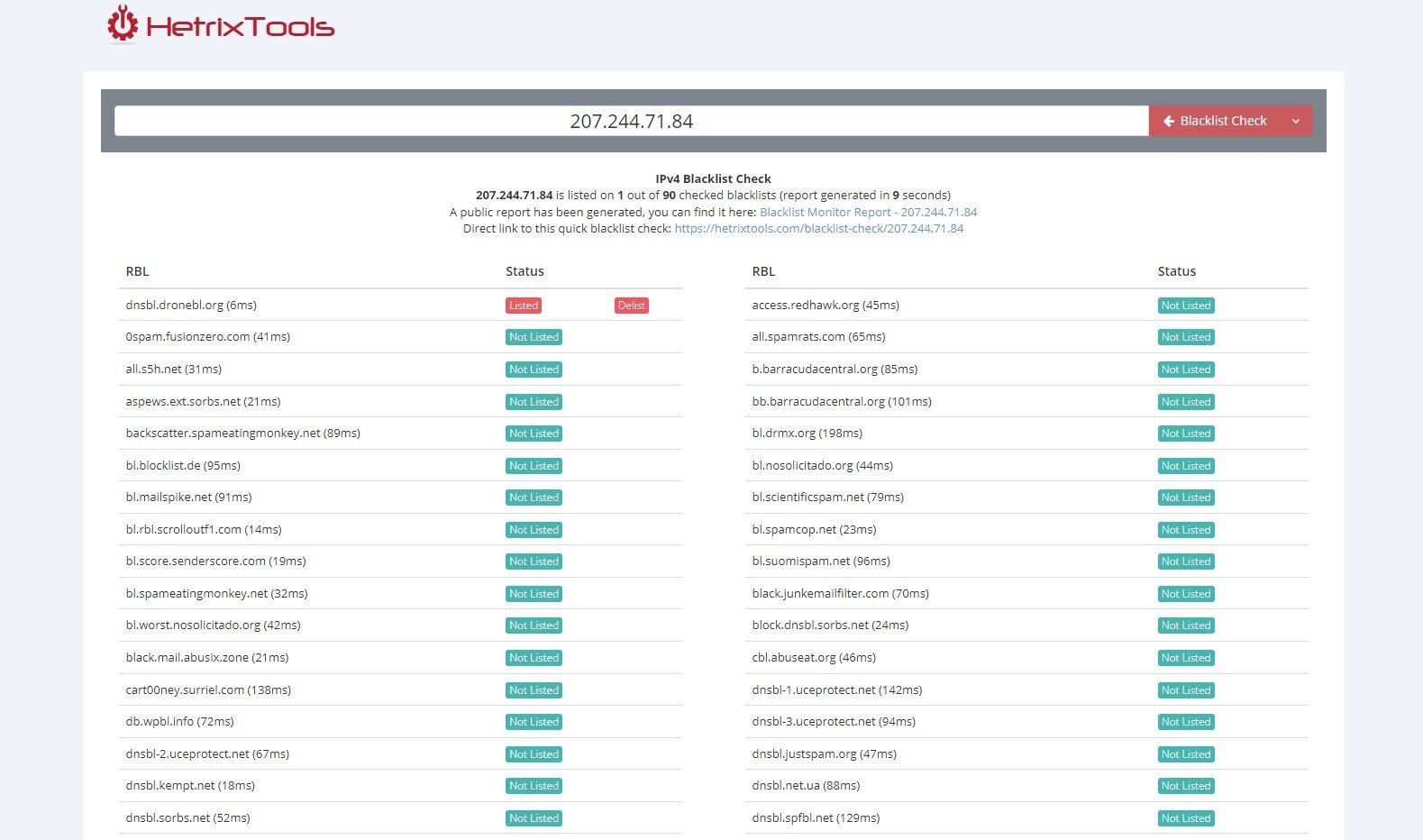
(Source: HetrixTools.com)
2. Impact on email marketing
How being blacklisted affects deliverability rates
Being blacklisted can have a detrimental impact on the deliverability of your email campaigns. When your IP address or domain is blacklisted, your emails will likely be filtered into spam folders or rejected by recipient servers. This situation significantly reduces the chances of your messages reaching your target audience.
Consequences of being blacklisted on brand reputation and customer trust
Besides the immediate deliverability issues, getting blacklisted can tarnish your brand's reputation and erode customer trust. For instance, promoting online marketing degree programs is crucial for your online university's success.
Potential students who receive spam or malicious emails from your domain may develop negative perceptions of your organization, leading to lost business and damaging your online university's image.
Statistical insights on the prevalence of blacklisted emails in marketing campaigns
Statistics indicate that many email marketing campaigns end up with at least some emails getting blacklisted. In 2022 alone, 48.63% of all emails sent worldwide were identified as spam. This scenario underscores the importance of understanding and addressing this issue for successful email marketing.
3. Common reasons for getting blacklisted
Several factors can lead to your email address or domain ending on a blacklist. Some of the common reasons include:
1. High bounce rates: Sending emails to invalid or non-existent email addresses can trigger bounce rates, which are seen as a red flag by ISPs.
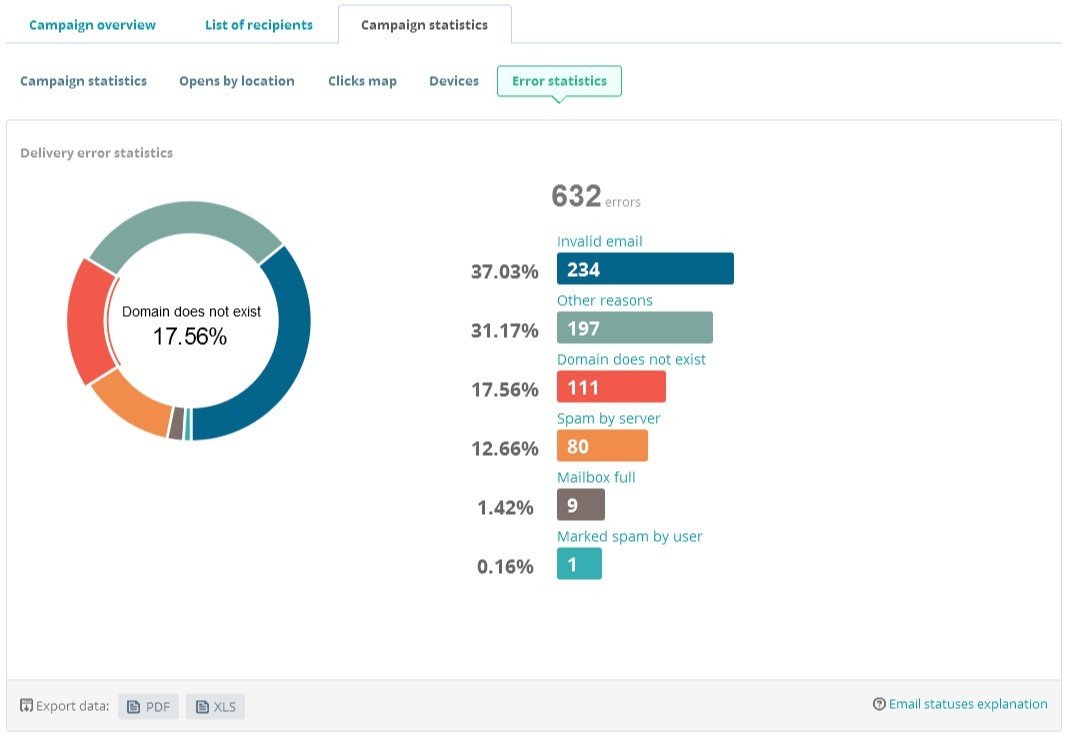
(Source: SendPulse.com)
2. Spammy content in emails: Using deceptive subject lines, excessive capitalization, and certain keywords can make your emails appear spammy. Try to add visual content like infographics, charts, swimlane diagrams, eBooks, and other sorts of visuals. This significantly reduces the chances of being spammed.
3. Unsolicited bulk emailing (spam): Sending unsolicited bulk emails to individuals who didn't sign in to receive your messages, like when conducting poorly-planned email blasts, is a way to have your email address blacklisted.
4. Malware or phishing links within emails: Emails containing links to malware or phishing websites can result in blacklisting.
5. User complaints or high report rates: If recipients frequently mark your emails as spam, it can lead to blacklisting.
4. How to check if you're blacklisted
You can employ different online tools to check if domain blacklisted. These tools provide insights into your email sender reputation and whether you're on blacklists. Understanding the feedback from these tools is crucial in addressing the issue effectively.
Here is a list of relevant tools and platforms to aid you in checking your blacklisting status:
- MXToolBox: This is a comprehensive DNS analysis toolkit with a user-friendly interface for checking the blacklisting status of your IP address or domain;
- Sender Score by Return Path: Sender Score assesses the email sender's reputation, providing a numerical score and a platform for quick blacklisting status checks;
- Barracuda Central: Barracuda Central monitors email and web traffic for security threats and offers a free IP reputation lookup tool to check your IP against their blacklist;
- Spamhaus: Spamhaus, a renowned anti-spam organization, offers an online lookup tool to check your IP address or domain against their blacklists;
- SURBL: SURBL specializes in detecting spammy URLs and provides a tool to check if any of your email links are blacklisted.
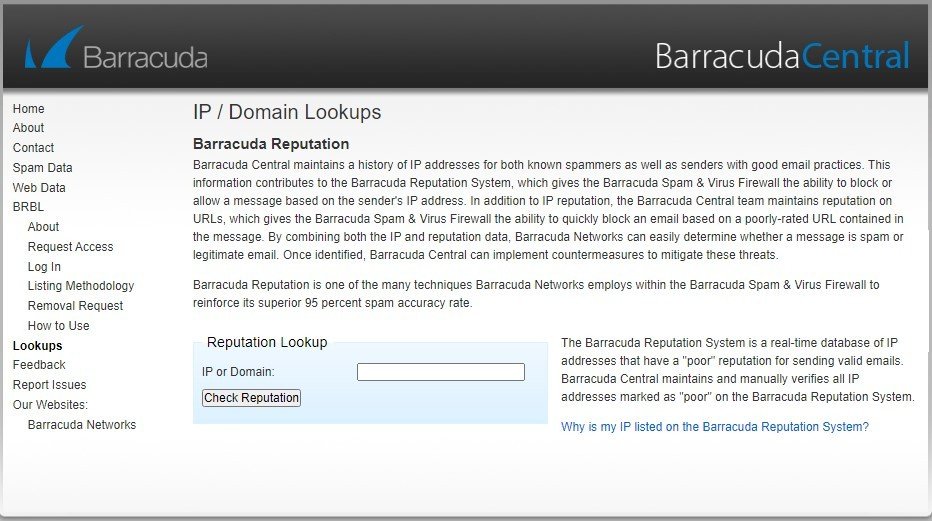
(Source: Barracuda Central)
5. Remediation steps
If you're blacklisted, swift action is necessary to rectify the situation. Here are some steps to take:
- Approach email service providers: Contact the relevant email service providers and request removal from the blacklist. Provide them with evidence that you have resolved the issues that led to blacklisting.
- Craft a compelling case for removal: Collect data and maintain records demonstrating your commitment to best practices in email marketing. Show how your email practices have changed and improved to prevent future issues.
- Technical considerations: Implement SPF (Sender Policy Framework), DKIM (DomainKeys Identified Mail), and DMARC (Domain-based Message Authentication, Reporting, and Conformance) records to enhance email authentication and prove your legitimacy as a sender.
6. Prevention strategies
Preventing blacklisting is preferable to dealing with the consequences. Here are some prevention strategies:
- Follow best practices in email list building: Emphasize organic list growth, use double opt-ins, and regularly clean your email list to ensure it only contains engaged and interested recipients.
- Work on content strategies to avoid triggering spam filters: Utilize AI-powered tools to optimize email content and avoid triggering spam filters.
- Monitor email metrics regularly: Keep an eye on key metrics like open rate, bounce rate, and unsubscribe rate, and use AI for advanced monitoring and analysis.
- Use predictive analysis: Leverage AI for predictive analysis to anticipate email engagement trends and adjust your strategies accordingly.
- Benefit from dynamic segmentation: Segment your email list per user preferences and behavior to send more relevant content.
- Implement automated A/B testing: Use AI-powered automated A/B testing to optimize campaigns in real-time.
- Make use of intelligent frequency optimization: Let AI optimize email frequency based on recipient behavior and engagement history.
7. Examples of brands whose emails were blacklisted
Here are two real-life examples of brands whose emails were blacklisted. We will discuss their journey to rectify the situation and the lessons they learned.
Amazon
In 2010, Amazon's email marketing campaigns were blacklisted by several major email providers, including Gmail, Yahoo, and Hotmail. This was due to some factors, including aggressive subject lines, excessive sending volume, and poor deliverability practices.
Amazon worked quickly to rectify the situation. They revised their email marketing practices, hired a new vendor, and worked with the blacklisting providers to get their emails re-delivered. As a result of their efforts, Amazon's email marketing campaigns were restored to good standing within a few months.
Lessons learned:
- use clear and brief subject lines that precisely reflect the content of the email;
- avoid sending too many emails too often;
- make sure your emails are properly formatted and free of errors;
- use a reputable email marketing vendor that follows best practices;
- work with blacklisting providers to get your emails re-delivered if they are blacklisted.
Groupon
In 2013, Groupon's email marketing campaigns were blacklisted by several major email providers, including AOL and Comcast. This was due to several factors, including the use of deceptive subject lines, high spam complaints, and the sale of email addresses to third-party vendors.
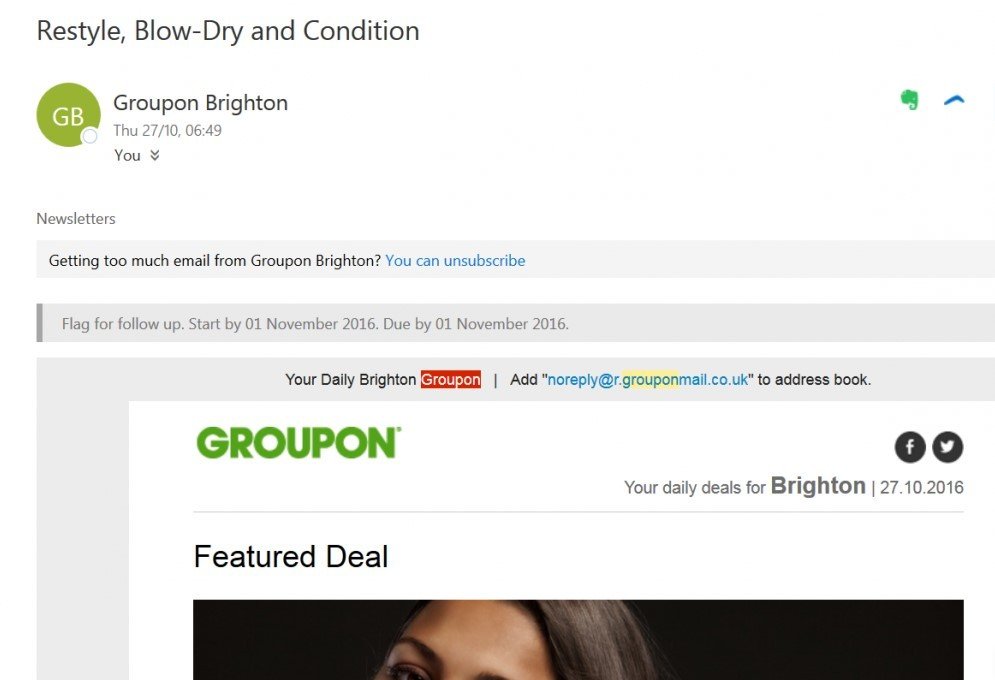
(Source: A sample Groupon email)
Groupon worked to rectify the situation by revising their email marketing practices, hiring a new email marketing vendor, and working with the blacklisting providers to get their emails re-delivered. However, the damage had been done, and Groupon's reputation as an email marketer was tarnished.
Lessons learned:
- be honest and transparent in your email marketing campaigns;
- avoid using deceptive subject lines or sending emails that are not relevant to the recipient;
- monitor your spam complaints and take action to address any issues;
- do not sell or rent your email lists to third-party vendors.
8. Legal implications
Laws covering unsolicited emails and user data protection
General Data Protection Regulation: GDPR enforces strict regulations on email marketing, requiring explicit consent from recipients before sending emails and providing the option to unsubscribe easily. Non-compliance can result in substantial fines.
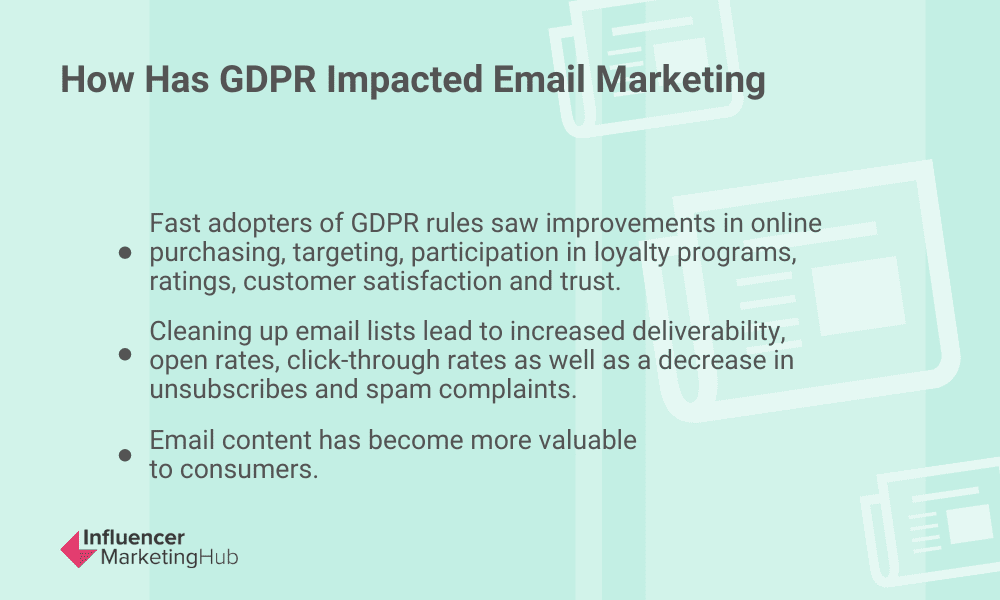
(Source: Influencer Marketing Hub)
CAN-SPAM Act: In the United States, the CAN-SPAM Act mandates that commercial emails must include a valid physical address, offer a clear way to opt out, and accurately represent the sender. Violations can result in penalties of up to $43,280 per email.
Ethical considerations in email marketing
Beyond legal requirements, ethical email marketing emphasizes respect for recipients' preferences and privacy. It involves transparent communication, clear opt-in processes, and a commitment to delivering relevant, valuable content. Ethical marketers prioritize building long-term relationships over short-term gains, fostering trust and loyalty among their audience.
9. Comparison between various email deliverability tools and platforms
- MXToolBox vs. Sender Score
MXToolBox specializes in in-depth DNS analysis, including blacklisting checks, while Sender Score by Return Path assesses the sender's reputation quickly through a numerical score. Select MXToolBox for thorough analysis or Sender Score for a rapid reputation assessment.
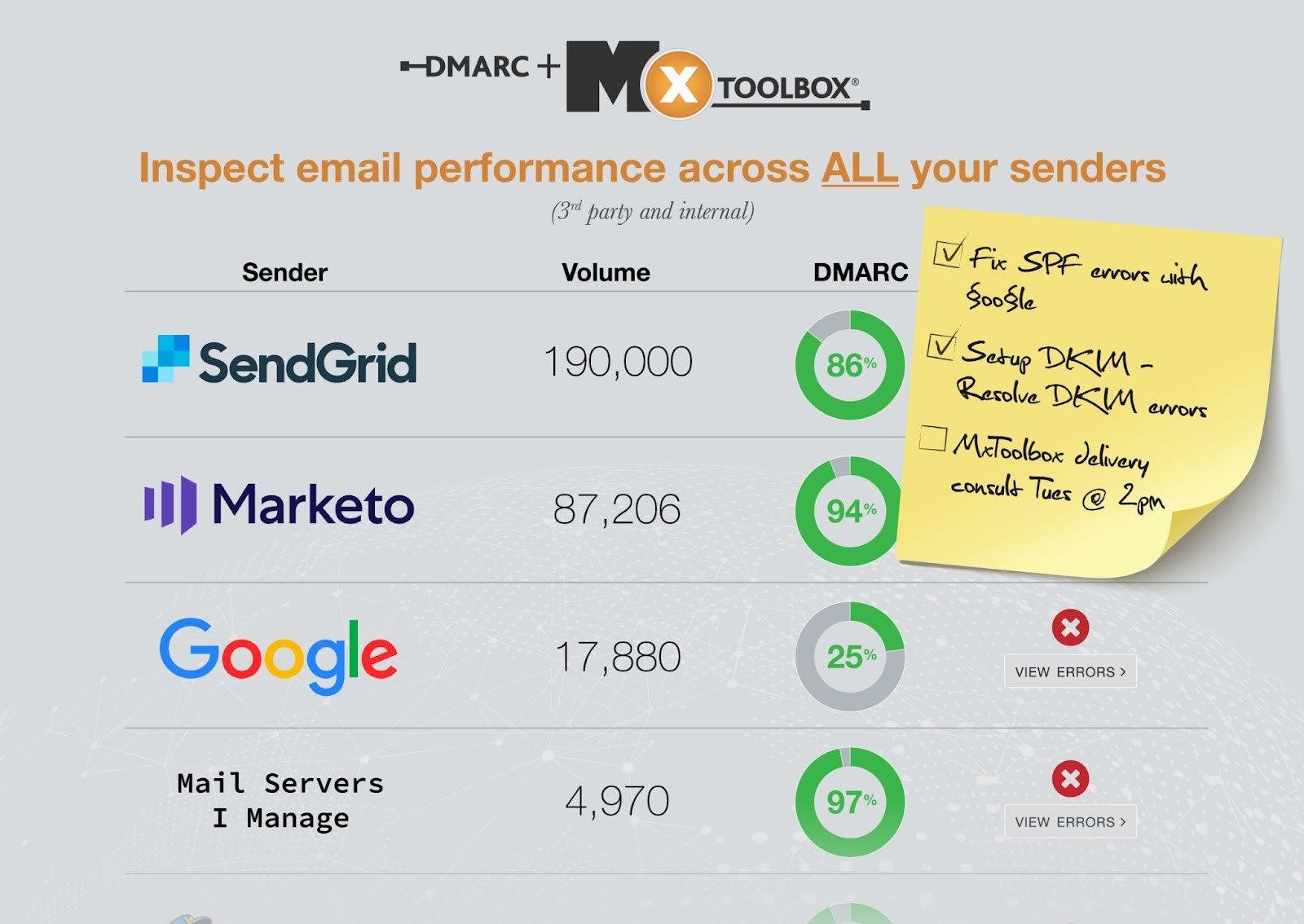
(Source: MXToolBox)
- MXToolBox vs. Barracuda Central
MXToolBox offers comprehensive DNS analysis, while Barracuda Central focuses on monitoring email and web traffic for security threats. Use MXToolBox for overall email health assessment and Barracuda Central for security-oriented reputation checks.
- MXToolBox vs. Spamhaus
MXToolBox covers various DNS aspects, including blacklists, while Spamhaus maintains anti-spam blacklists. Use MXToolBox for comprehensive DNS analysis and Spamhaus to specifically check and address spam-related blacklists.
- MXToolBox vs. SURBL
MXToolBox provides DNS analysis and blacklist checks, while SURBL specializes in detecting spammy URLs in emails. Employ MXToolBox for holistic analysis and SURBL to pinpoint issues related to malicious URLs.
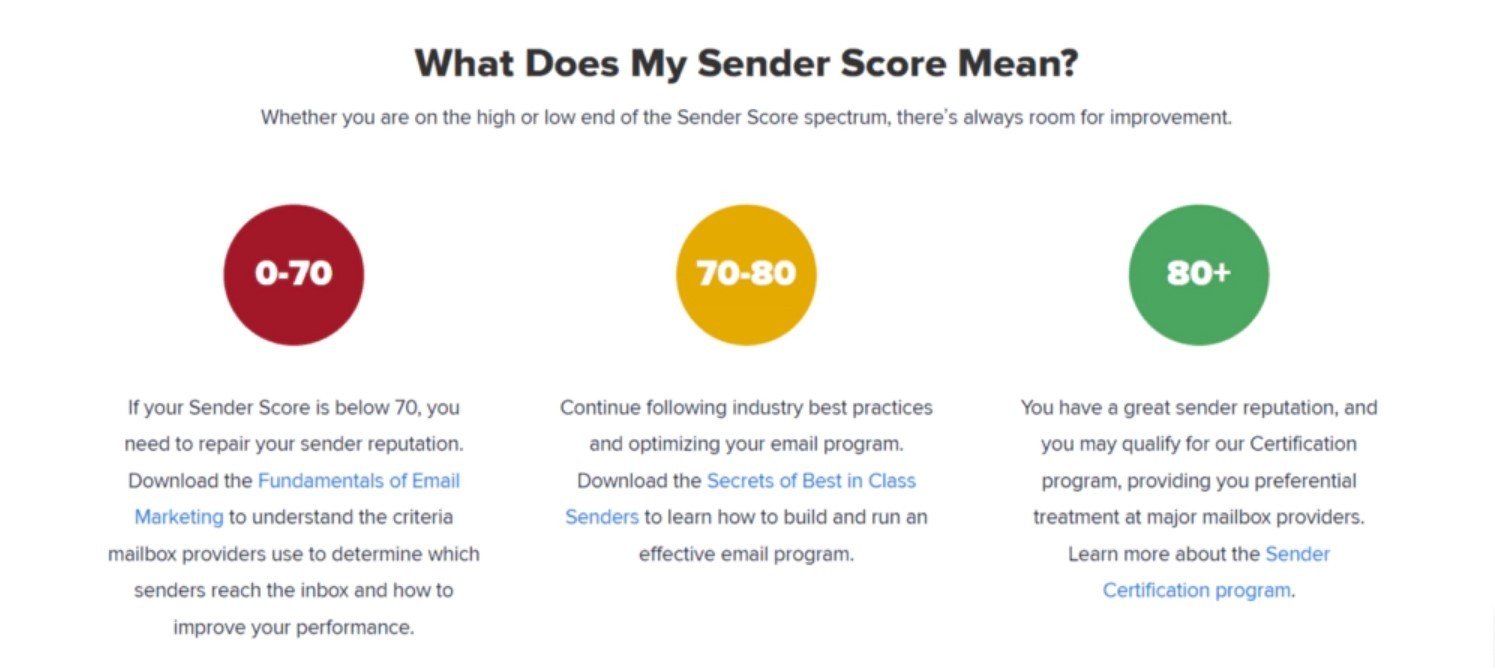
(Source: Sender Score)
- Sender Score vs. Barracuda Central
Sender Score evaluates the sender's reputation, while Barracuda Central monitors email and web traffic for security threats. Utilize Sender Score to assess your sender reputation and Barracuda Central for broader security-related checks.
- Sender Score vs. Spamhaus
Sender Score offers a numerical sender reputation score, while Spamhaus maintains anti-spam blacklists. Leverage Sender Score to gauge your sender reputation and Spamhaus to address spam-specific blacklist issues.
- Sender Score vs. SURBL
Sender Score assesses sender reputation, while SURBL identifies spammy URLs. Choose Sender Score for reputation evaluation and SURBL for scrutinizing links within your emails.
- Barracuda Central vs. Spamhaus
Both Barracuda Central and Spamhaus offer IP reputation lookup tools. Employ both for a comprehensive check of your IP address against a wide range of blacklists.
- Barracuda Central vs. SURBL
Barracuda Central concentrates on security threat monitoring, while SURBL specializes in identifying malicious URLs. Use Barracuda Central for overall security checks and SURBL to examine links in your emails.
- Spamhaus vs. SURBL
Spamhaus maintains anti-spam blacklists, while SURBL focuses on detecting spammy URLs. Combine both to tackle both blacklist-related and URL-related issues effectively.
Differences in blacklisting criteria among major email service providers
Different email service providers may have varying criteria for blacklisting senders. While most consider factors like spam complaints, bounce rates, and engagement metrics, the specific thresholds and algorithms can differ.
Maintaining best practices across the board is essential to avoid blacklisting by major providers like Gmail, Yahoo, and Outlook. Regularly monitoring your sender's reputation and compliance with their guidelines is crucial for consistent email deliverability.
Wrapping up
Email blacklisting is a challenge that can significantly impact your email marketing efforts and brand reputation. Understanding the causes of blacklisting, regularly monitoring your sender's reputation, and implementing prevention strategies are essential to maintaining successful and trusted email communication.
By proactively addressing blacklisting issues and adhering to best practices, you can guarantee that your emails continue to reach your audience and support your organization's goals.


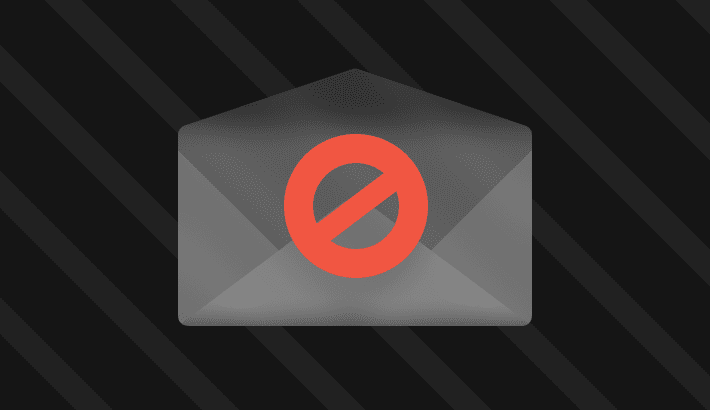





0 comments